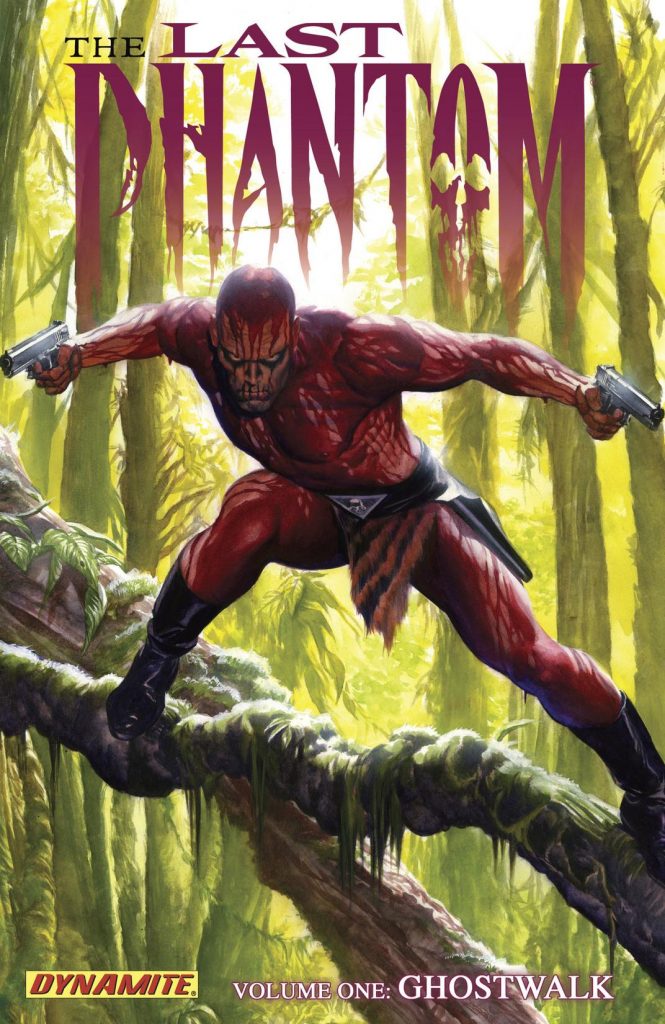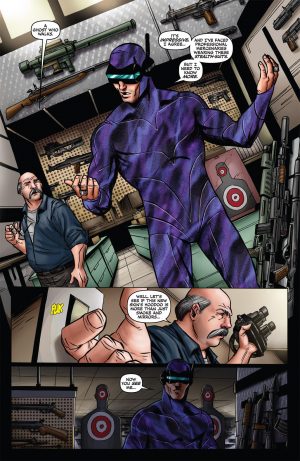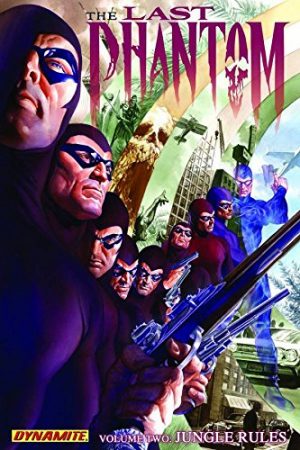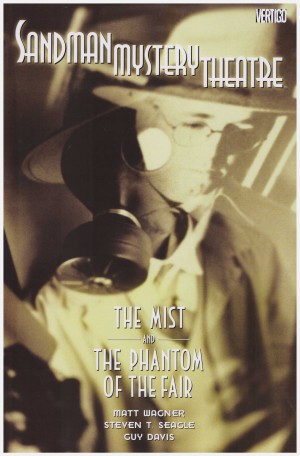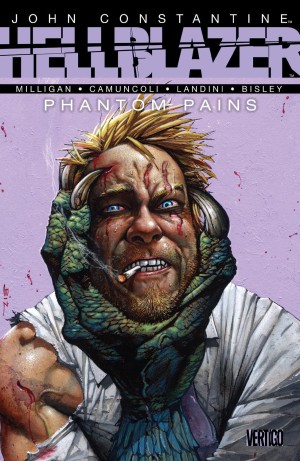Review by Ian Keogh
The Phantom has a place in comics history as the first masked and costumed hero, created in 1936 by Lee Falk. His newspaper strip is still running, but interest in comics has been sporadic, with no regular series from a major publisher since the 1970s. That’s in the USA at least. In Australia, India, Scandinavia and other places the story of an African crime fighting dynasty remains incredibly popular.
Perhaps the reason for the lack of appreciation in the USA is an uncomfortable feeling regarding the Phantom’s origins and purpose as a dynastic white protector of African interests. In a manner Scott Beatty addresses that almost immediately. Kit Walker is the 21st family member to have inherited the Phantom’s costume and secrets, but has relinquished his heritage and built a successful global charitable foundation from his homeland in Bengali. If reconfiguring an African hero, why name his fictional country after a language spoken by 200 million people in Bangladesh and India? It’s slapdash.
As were all his ancestors, Walker was trained from an early age, so when trouble comes calling he’s more than capable, a one-man army with considerable resources at his disposal, and that’s the way Beatty writes him. He doesn’t have the vest, but otherwise for much of the book he’s John McClane from the Die Hard franchise, doing what it takes to set things right, a high corpse count accumulating in the process. As such Ghostwalk is formidable action-adventure, but the trappings appear entirely incidental. We have the Phantom’s skull ring, his horse Hero and his wolf Devil, but despite the occasional glimpse back into the past there’s very little defining the Phantom as a character. Beatty’s playing a long game, redefining the Phantom for the 21st century, and toward the end of the book while the plot remains a cinematic revenge scenario, the Phantom has been successfully reconstituted with era-appropriate technology ensuring he’s now closer to his common identity as ‘The Ghost who Walks’. The problem is, however, perception of the Phantom is very tied to his environment, which for all its colonial patronising serves to differentiate him from other crimefighters. Africa has so many story possibilities, and removing the Phantom from it weakens him as a character.
That’s further the case for the art. Beatty’s script is extremely visual with several big and exciting moments, but Eduardo Ferigato never brings them to life as another artist might. He cramps what should be large images into small panels, so never thrilling, and it detracts from the spectacle. Otherwise he’s fine, in a basic fashion, erring toward cartooning rather than realism.
There are a few plot flaws. Covering the Phantom in blood for the opening chapters is just misguided, but an unfit company executive able to outrun the Phantom on Hero over a considerable distance? Really? And the ending may disappoint. Beatty inflates and inflates the plot, then just lets it down gently rather than providing the big bang. It makes a statement, but at the cost of disappointing. This is a workable action thriller, but it’s not the Phantom, and the series concludes with Jungle Rules.
